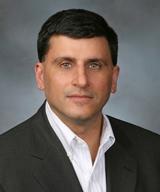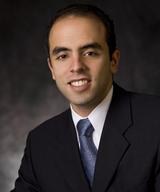On March 8, 2011, the U.S. Senate passed S.23, the "America Invents Act," by a bipartisan vote of 95 to 5, representing a significant overhaul of the U.S. patent system.1A similar bill, H.R.1249, is now about to be considered for debate on the floor of the U.S. House of Representatives. If passed by Congress and signed into law by President Obama, this would be one of the most significant pieces of patent legislation in almost 60 years.
The Senate Act
There are a number of key provisions addressed in S.23, including provisions relating to the transition to a first-inventor-to-file system, procedures for challenging patentability, supplemental examination of issued patents, fee diversion, false marking, best mode, and business method patents.
First-Inventor-to-File - S.23 transitions the U.S. patent system from a first -to-invent system to a first- inventor-to-file system, which allows the first inventor to file a patent application in the U.S. Patent and Trademark Office (PTO) to potentially obtain patent rights. Whether an inventor can obtain the patent depends on the prior art that is available before the application's "effective filing date" in the PTO. This provision harmonizes U.S. patent law with that of the rest of the world. S.23 also includes a grace period that allows inventors to file a patent application one year after the first public disclosure of the invention.
Challenging Patentability - New procedures for challenging the patentability of a pending patent application or the validity of a newly issued patent are included in S.23:
• Preissuance Submissions by Third Parties - S.23 permits any third party to submit prior art for consideration during pendency of a patent application. The PTO will, thus, have greater opportunities to assess relevant prior art.
• First-Window, Post-Grant Challenges - A first-window, post-grant opposition proceeding would be created, in which third parties may petition the PTO to institute a review of the validity of a patent up to nine months after the patent issues from the PTO. A third party would be permitted to challenge at least one claim of a newly issued patent on essentially any grounds of invalidity. This proceeding is intended to increase both the quality of patents and certainty for inventors and patent owners/assignees.
• Reexamination - Proceedings for the inter partes reexamination of issued patents will be modified to reduce the delays present in the current system. S.23 calls for: (i) inter partes reexaminations of issued patents to be conducted by a panel of three administrative law judges and (ii) a final determination to be reached within 12 months after the proceeding is initiated by the PTO. Additionally, S.23 institutes a higher threshold requirement for initiating the proceeding, in that the prior art applied against the patent must provide a "reasonable likelihood that the petitioner would prevail on at least one claim," instead of the current "substantial new question of patentability" standard. S.23 also includes time restrictions for filing a request for reexamination in the context of parallel litigation involving the same patent. Notably, ex parte reexamination procedures remain unaffected by S.23.
Supplemental Examination - S.23 permits supplemental examination of issued patents at the request of the patent owner. Specifically, a patent owner may request the supplemental PTO examination of an issued patent by the PTO to consider or correct information believed to be relevant to the patent. Within three months of the request, the PTO will determine whether the information raises a "substantial new question of patentability" that would warrant reexamination. Importantly, evidence disclosed by a patent owner to the PTO during this supplemental examination cannot later be asserted by a defendant as evidence of inequitable conduct, provided the supplemental examination proceeding has concluded. This prevents patent owners already involved in litigation from rushing to the PTO to cure potential inequitable conduct issues that arise during the litigation.
Anti-Fee Diversion - The PTO will have direct access to all of the fees it collects. Currently, the PTO's fees are diverted into a U.S. Treasury account, and the PTO is limited in the percentage of those fees it is allotted from this account. In the last two decades, Congress has diverted approximately $800 million collected from PTO fees to other federal spending. The elimination of this fee diversion should assist the PTO in reducing the backlog of pending patent applications and facilitate enhanced quality control.
False Marking - The ability to assert qui tam claims for false patent marking is greatly restricted in this legislation. Specifically, false marking actions would be available only to: (i) the United States government or (ii) parties that suffered a competitive injury as a result of false marking. Additionally, this change would be effective for all false marking cases that are pending at the time the legislation is enacted. This provision will likely temper the frequency of false marking filings.
Best Mode - An inventor's failure to disclose the best mode to practice the invention under 35 U.S.C. § 112 will be eliminated as an invalidity defense in a patent enforcement action. However, the best mode requirement for obtaining a patent during prosecution would still exist.
Business Method Patents - S.23 provides for an alternative to civil litigation to challenge business method patents in the PTO in light of last year's decision by the U. S. Supreme Court in Bilski v. Kappos. This transitional proceeding is limited to specific categories of prior art and will be available for four years after the effective date of the provision.
The House Act
On March 30, shortly after S.23 was passed in the Senate, the House introduced H.R.1249 (also titled the "America Invents Act"), which was reported favorably by the House Judiciary Committee on April 14, 2011, by a bipartisan vote of 32 to 3. The bill is expected to now move to the House floor for consideration. H.R.1249 is nearly identical to S.23 on many issues. For example, both bills would transition the U.S. from a first- to-invent to a first -inventor-to-file system, establish post-grant review procedures and give the PTO more authority over the fees it collects from applicants, among other things. However, there are some differences:
First-Window, Post-Grant Challenges - H.R.1249 includes different post-grant review procedures. First, it extends the window to challenge an issued patent from nine months to twelve. Additionally, it provides an avenue to institute post-grant review whereby a petitioner can either "demonstrate that it is more likely than not that at least one of the claims challenged in the petition is unpatentable" or show "that the petition raises a novel or unsettled legal question that is important to other patents or patent applications."
Supplemental Examination - Supplemental examination is identical to the Senate bill, except for an additional provision that precludes supplemental examination of a patent in connection with which the Director of the PTO determines that fraud was practiced or attempted. Under such circumstances, the matter would be referred to the Attorney General.
Automatic Stay of Civil Litigation - H.R.1249 provides an automatic stay of civil litigation if the litigated patent is also the subject of post-grant review or inter partes reexamination, with some limitations. Under H.R.1249, this automatic stay would arise in declaratory judgment (DJ) actions that challenge the patent's validity, where the DJ plaintiff has already filed a petition in the PTO for post-grant review or reexamination of the patent. The stay would be automatically entered in the litigation until either the patent owner requested it to be lifted, the patent owner filed a counterclaim in the civil action alleging that the petitioner infringed the patent, or the petitioner moved to dismiss the civil action. H.R.1249 also precludes post-grant review or inter partes reexamination proceedings from being instituted if the petitioner filed a DJ action prior to petitioning the PTO.
• For non-automatic stay situations, H.R.1249 specifically lists factors for a district court to consider in determining whether to grant a discretionary stay when a post-grant review proceeding and a civil litigation involving the same patent are co-pending. These factors mirror those currently considered by district courts when determining whether to grant a stay: (i) whether the stay would streamline issues for trial; (ii) whether discovery is complete and a trial has been set; (iii) whether the stay would unduly prejudice the nonmoving party or present a clear tactical advantage for the moving party; and (iv) whether a stay or denial thereof will reduce the burden of litigation on the parties and the court.
Prior Use Defense - Currently, prior users of a method may assert a "prior use defense" to infringement in the event another party obtains a patent on that method. Significantly, that defense can only be asserted as a defense to infringement of a method patent. H.R.1249 would extend the prior use defense to nearly all patents, with some limited exceptions. For example, the defense cannot be asserted if the patented invention was developed under a federally funded research and development agreement or by a university or tech transfer organization that did not receive funding from private business.
Study Regarding Non-Practicing Entities - One provision in the current version of the bill requires a study be conducted on the consequences of litigation by non-practicing entities, including: the volume of such litigation, the impact of such litigation on court dockets, the estimated costs associated with such litigation, and the benefit to commerce supplied by non-practicing entities. The study is to be reported to the House within one year of enactment of the bill.
Where Do These Bills Go From Here?
H.R.1249 has been favorably reported by the House Judiciary Committee and it is expected to head to the House floor for further debate and amendment as early as June 2011. Many expect the provisions regarding first-inventor-to-file, prior user rights, and the one-year first-inventor-to-file grace period to be debated on the House floor. Additionally, other proposed amendments that were either filed but not offered or debated and withdrawn in the Committee could be considered. One such example is a withdrawn amendment that sought to exempt genetic diagnostic testing facilities from infringement suits when giving a second/confirming opinion.
Both the House and Senate bills are generally supported by organizations and companies such as The Coalition for 21st Century Patent Reform, the Intellectual Property Owners' Association, GE, DuPont, Eli Lilly, Caterpillar, Johnson & Johnson, Proctor and Gamble, 3M, the Association of American Universities, the ABA Section of Intellectual Property Law, and IBM.
If passed by the House, the final bill will need to be reconciled with S.23 before patent reform can be presented to President Obama. Congress appears to be on a path towards enacting some form of patent reform legislation in 2011, barring an unexpected development or the inability of the House and Senate to work out differences in their bills. 1 S.23, as passed by the Senate, is available at http://www.gpo.gov/fdsys/pkg/BILLS-112s23es/pdf/BILLS-112s23es.pdf.
Published May 31, 2011.



